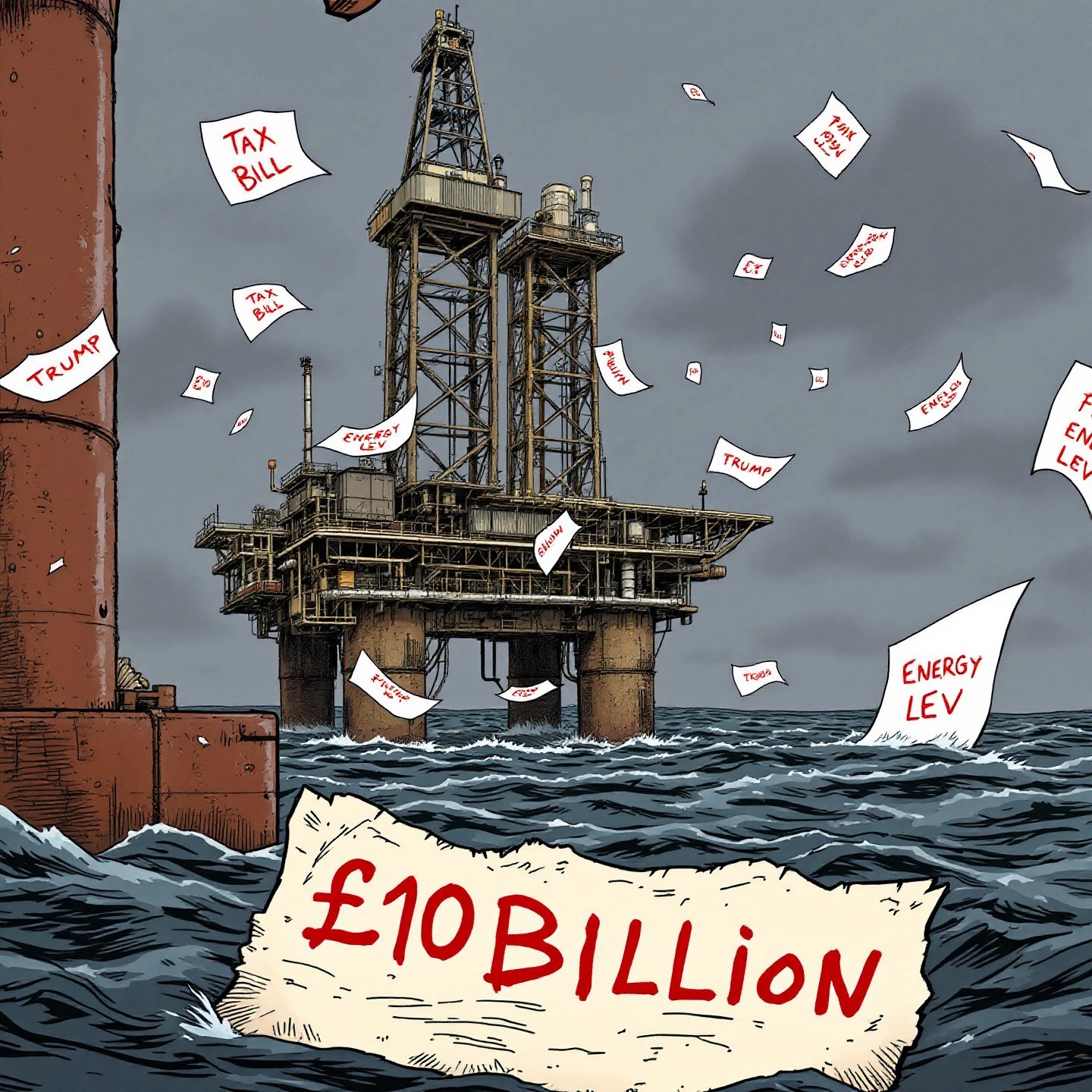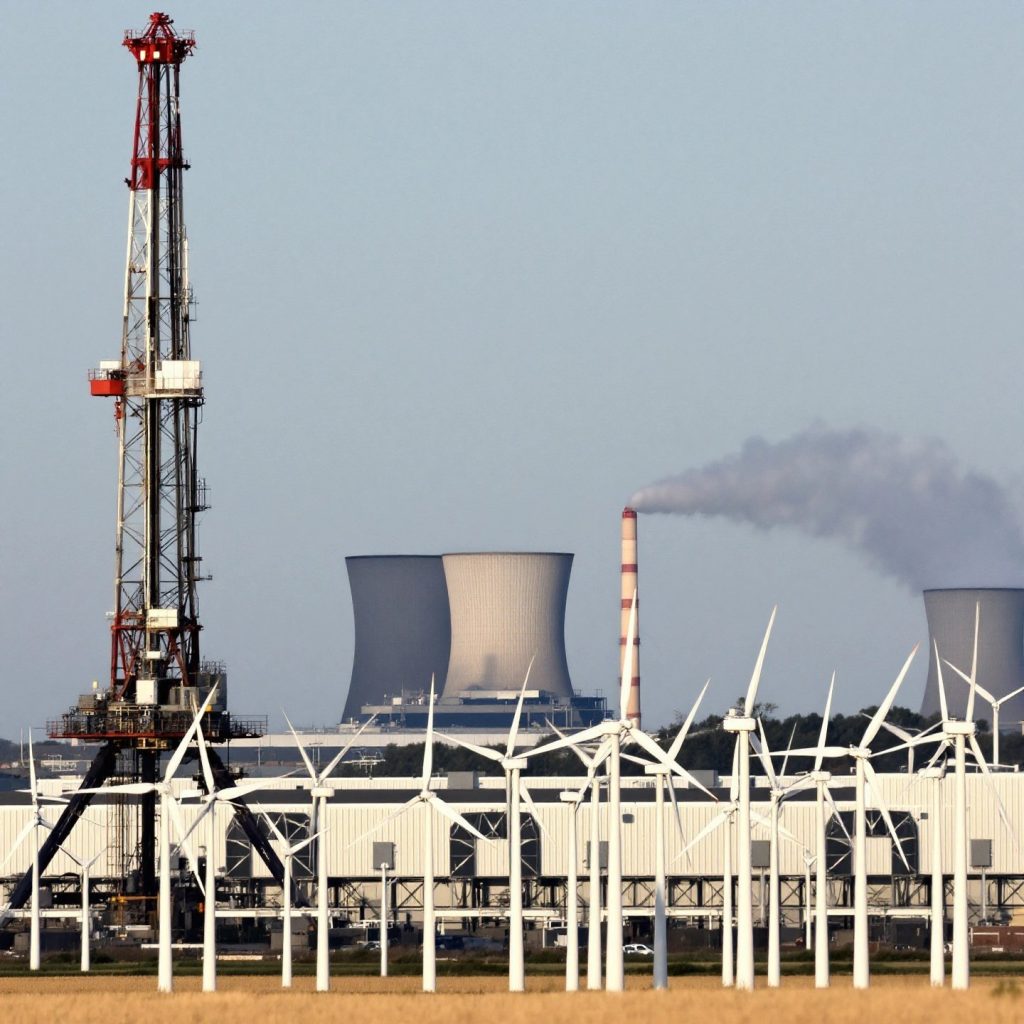Introduction to Trump Energy Policy
The Trump energy policy, a hallmark of his administration, marked a significant shift in the United States’ approach to energy production and consumption. Characterized by a strong emphasis on fossil fuels, deregulation, and energy independence, this policy aimed to position the U.S. as a dominant force in global energy markets. But what does this mean for the global stage, and how has it evolved over time?
From the outset, Trump’s strategy was clear: prioritize domestic energy production, particularly oil and gas, to reduce reliance on foreign imports and bolster national security. This approach was underscored by the rollback of numerous environmental regulations, which were seen as impediments to energy development. The policy’s evolution can be traced back to its roots in economic nationalism, a core tenet of Trump’s ‘America First’ doctrine. This shift was not just about energy; it was a broader statement on U.S. sovereignty and economic autonomy.
On the global front, Trump’s policies have had a profound impact. By increasing domestic oil production, the U.S. significantly altered global oil dynamics, affecting prices and influencing international relations. The administration’s withdrawal from the Paris Climate Agreement further signaled a departure from multilateral environmental commitments, emphasizing a focus on economic growth over climate considerations. This move was controversial, drawing criticism from environmentalists and international allies alike, yet it underscored a commitment to energy dominance.
Politically, Trump’s energy policy has reshaped the landscape, creating new alliances and tensions. Economically, it has driven significant investment in the oil and gas sectors, though at the cost of environmental sustainability. As we delve deeper into the specifics of Trump’s energy initiatives, it’s crucial to understand this policy’s dual nature: a driver of economic growth and a source of environmental contention. This sets the stage for a detailed exploration of the policy’s legacy and its implications for the future of energy both in the U.S. and globally.

Donald Trump Criticizes the UK’s North Sea Energy Tax Policy
In a move that stirred international discourse, Donald Trump has openly criticized the UK’s North Sea energy tax framework, labeling it as a “very big mistake.” This critique aligns with his broader energy policy narrative, which emphasizes reducing regulatory burdens to bolster energy production and economic growth. But what exactly are the components of this tax policy, and why has it garnered such criticism from Trump?
The North Sea energy tax framework comprises several profit-related taxes, including the ring fence corporation tax, supplementary charge, petroleum revenue tax, and the recently introduced energy profits levy. The latter, a windfall tax, was implemented in May 2022 as a response to soaring energy company profits following the Russia-Ukraine conflict. This levy, initially set at 25%, was later increased to 35% and extended until March 2028. The UK government justified these measures as necessary for capturing excess profits during times of high energy prices, but they have been contentious, particularly among industry stakeholders.
Reasons Behind Trump’s Criticism
Trump’s criticism of the UK’s energy tax policy is rooted in his belief that high taxes stifle investment and economic growth. His administration championed lower taxes and fewer regulations, aiming to enhance energy independence and competitiveness. By contrast, the UK’s approach, particularly under Prime Minister Keir Starmer’s leadership, has been more climate-conscious, focusing on reducing carbon emissions and promoting renewable energy sources.
Trump’s call for the UK to “open up the North Sea” and eliminate “windmills” reflects his preference for traditional energy sources and skepticism towards renewable energy initiatives. This stance is consistent with his domestic policies, which prioritized fossil fuel development over environmental regulations.
Impact on International Relations
Trump’s outspoken stance on the North Sea energy tax has potential implications for international relations, particularly between the U.S. and the UK. His comments come at a time when some U.S. companies, like APA Corp., are reconsidering their investments in the North Sea due to the “onerous” tax environment. This could lead to a shift in energy investment dynamics, with companies potentially seeking more favorable conditions elsewhere.
Furthermore, Trump’s criticisms underscore a broader transatlantic divide in energy policy approaches. While the UK government remains committed to its climate goals, Trump’s advocacy for deregulation and fossil fuel expansion highlights differing priorities that could influence future diplomatic and economic engagements.
As we continue to explore the nuances of Trump’s energy policies, understanding these international dimensions is crucial. The next section will delve into how these policies have specifically impacted oil markets, both domestically and globally.
President Trump’s Energy Policies and Their Impact on Oil Markets
President Trump’s energy policies have played a pivotal role in reshaping the oil markets both in the United States and globally. By focusing on deregulation and energy independence, his administration aimed to transform the U.S. into a dominant oil producer. But how exactly did these policies influence oil production, prices, and investments?
Regulatory Rollbacks and Incentives
One of the cornerstones of Trump’s energy strategy was the rollback of regulations that were perceived as hindrances to oil and gas production. On his first day in office, Trump declared an energy emergency, emphasizing the need to expand the nation’s energy infrastructure. This led to a series of executive orders aimed at lifting restrictions on oil and gas production, particularly in regions like Alaska. These actions were designed to ‘unleash’ America’s natural resources, aligning with his ‘Drill, Baby, Drill’ mantra.
Trump’s administration also introduced incentives to boost domestic energy production. By ending the pause on new LNG exports and easing regulations, the policy was tailored to encourage investment in the sector. This approach was intended to increase output and reduce energy costs for consumers, though it was met with mixed reactions from the industry. While some companies welcomed the reduced regulatory burden, others remained cautious, citing concerns over potential market gluts and price volatility.
Short-term vs. Long-term Consequences
In the short term, these policies contributed to a surge in U.S. oil production. According to the U.S. Energy Information Administration, crude output reached record highs, with significant month-on-month increases. However, this rapid expansion also posed challenges. Weaker-than-expected demand growth, particularly in key markets like China, led to lower oil prices, highlighting the complexities of balancing production with global demand.
In the long term, the impact of Trump’s policies is more nuanced. While the deregulatory environment has made it easier for companies to pursue new projects, the sustainability of such growth is uncertain. With the International Energy Agency predicting a decline in fossil fuel demand by 2030, U.S. companies face the challenge of adapting to a potentially shrinking market. Additionally, the emphasis on fossil fuels over renewable energy sources has drawn criticism from environmentalists and raised questions about the long-term viability of the U.S. energy strategy.
As the global energy landscape continues to evolve, the legacy of Trump’s energy policies will likely influence future administrations. The next section will explore potential extensions or amendments to these policies by 2025, considering the challenges and opportunities that lie ahead in the dynamic energy market.
Trump Energy Policy 2025: Navigating Future Challenges and Opportunities
As we look towards 2025, the trajectory of Trump’s energy policy is poised for potential amendments and extensions. The evolving global energy landscape, marked by geopolitical shifts and technological advancements, presents both challenges and opportunities for the U.S. energy sector. But what could these changes entail, and how might they reshape the energy policy framework?
Potential Policy Extensions and Amendments
In light of recent developments, Trump’s administration may consider extending certain aspects of its energy policy, particularly those related to fossil fuel production and infrastructure expansion. The focus on energy independence remains a cornerstone, with potential amendments aimed at enhancing domestic capabilities in response to fluctuating global oil prices. Additionally, the administration may seek to bolster incentives for traditional energy sectors, while cautiously integrating select renewable initiatives to address growing environmental concerns.
Moreover, the administration could explore amendments to existing regulations to further streamline energy project approvals. This might involve revisiting environmental assessments and permitting processes to expedite development timelines, aligning with the broader goal of reducing bureaucratic hurdles for energy companies.
Challenges in the Evolving Energy Market
Despite these potential extensions, the energy market faces significant challenges. Geopolitical tensions, particularly in oil-rich regions, continue to influence global supply chains and pricing dynamics. As highlighted by S&P Global’s recent report, the energy transition is complex, requiring a balance between economic growth, energy security, and sustainability. These factors will undoubtedly shape future policy adjustments.
Domestically, the U.S. must navigate the economic implications of shifting energy demands. The International Energy Agency’s projections of declining fossil fuel demand by 2030 underscore the urgency for diversification within the energy sector. This transition poses a challenge for policymakers tasked with ensuring economic stability and job security amidst changing market conditions.
Opportunities for Innovation and Growth
Conversely, the evolving landscape presents opportunities for innovation and growth. Advances in energy technology, particularly in areas like energy storage and carbon capture, offer pathways to enhance efficiency and reduce emissions. By investing in these technologies, the U.S. can position itself as a leader in the global energy transition, fostering new economic opportunities and maintaining competitive advantage.
Furthermore, the potential for expanding nuclear energy initiatives aligns with the administration’s goals of achieving energy security while addressing environmental concerns. By leveraging technological advancements, the U.S. can explore new avenues for sustainable energy production, contributing to a more resilient energy grid.
As we anticipate potential policy developments by 2025, the interplay between geopolitical influences, technological progress, and market dynamics will be critical in shaping the future of Trump’s energy policy. The next section will delve into Trump’s stance on nuclear energy, examining its role in the broader energy strategy and the implications for national security and innovation.

Trump Nuclear Energy Policy: Balancing Security and Innovation
Nuclear energy has always been a contentious topic, yet under Trump’s administration, it was seen as a pivotal component of the broader energy strategy. But what exactly defines Trump’s nuclear energy policy, and how does it aim to balance national security, job creation, and innovation?
Emphasizing Energy Security and Sovereignty
At the heart of the Trump nuclear energy policy is a focus on energy security and national sovereignty. By increasing domestic nuclear energy production, the administration aimed to reduce reliance on foreign energy sources, thereby enhancing national security. This approach was underscored by the declaration of a ‘national energy emergency,’ which sought to expedite approvals for energy infrastructure, including nuclear projects. The administration’s stance was clear: nuclear power is integral to achieving energy independence and securing America’s energy future.
Job Creation and Economic Impacts
Nuclear energy is not only about security; it’s also about jobs and economic growth. The expansion of nuclear facilities was projected to create thousands of jobs, both directly and indirectly, in construction, operation, and maintenance. Additionally, the focus on domestic production was expected to stimulate economic activity in regions housing nuclear plants, contributing to local economies and providing high-paying jobs. By prioritizing nuclear energy, the Trump administration sought to revitalize the domestic energy sector and ensure long-term economic benefits.
Innovation and Regulatory Changes
A significant aspect of Trump’s nuclear energy policy was its emphasis on innovation. The administration supported the development of advanced nuclear technologies, such as small modular reactors (SMRs) and microreactors. These technologies promise enhanced safety, efficiency, and flexibility, making them attractive options for future energy needs. To facilitate the deployment of these innovations, the Nuclear Regulatory Commission (NRC) was tasked with streamlining the review and permitting process, reducing bureaucratic hurdles that could delay progress.
However, the policy was not without its challenges. Critics argued that the focus on nuclear energy diverted attention and resources from renewable energy sources, potentially hindering the broader transition to a sustainable energy future. Moreover, the safety and environmental concerns associated with nuclear energy, such as waste disposal and potential accidents, remained contentious issues.
Pros and Cons of the Nuclear Focus
The Trump nuclear energy policy presents a mixed bag of pros and cons. On the positive side, it enhances energy security, creates jobs, and fosters technological innovation. However, the risks associated with nuclear energy, including safety concerns and the long-term sustainability of nuclear waste management, cannot be ignored. Balancing these factors is crucial for the future of nuclear energy in the U.S.
As we move forward, the role of nuclear energy in the national grid will continue to evolve. The next section will explore Trump’s public statements versus actual policies on green energy, highlighting contradictions and achievements in the administration’s approach to renewable energy.
Trump’s Renewable and Green Energy Policy
When it comes to renewable and green energy, Trump’s public statements often painted a picture of skepticism, yet his administration’s actions sometimes told a different story. This duality has left many wondering: What was the true stance of Trump’s administration on green energy?
Public Statements vs. Policy Actions
Trump’s public rhetoric frequently downplayed the importance of renewable energy, often labeling initiatives like wind and solar as unreliable or economically unfeasible. He famously criticized wind turbines, suggesting they were detrimental to wildlife and aesthetics. However, behind the scenes, the reality was more nuanced. Under his administration, the U.S. saw a modest increase in renewable energy capacity, driven partly by market forces and state-level policies rather than federal mandates.
Despite the public skepticism, the Trump administration did not entirely obstruct renewable energy progress. Tax credits for solar and wind energy, which were established before his tenure, continued to incentivize growth in these sectors. Moreover, the economic viability of renewables, coupled with decreasing costs, led to their expansion, albeit without direct endorsement from the federal government.
Contradictions and Achievements
One of the significant contradictions in Trump’s green energy policy was the simultaneous support for fossil fuels alongside ongoing renewable projects. While the administration prioritized oil and gas, it did not dismantle existing incentives for renewables, allowing solar and wind to thrive in certain regions.
Furthermore, the administration’s withdrawal from the Paris Climate Agreement was seen as a step back for global climate commitments. Yet, during this period, U.S. carbon emissions continued to decline, partly due to the natural gas boom and the steady rise of renewable energy sources.
These contradictions highlight the complexity of the Trump green energy policy. Although the administration’s focus was not on promoting renewables, the groundwork laid by previous policies and the inherent market dynamics ensured that green energy continued to grow.
Exploring Solar Options with Renewable Energy Nexus
For those interested in exploring solar energy options, platforms like Renewable Energy Nexus offer valuable resources. This platform provides insights into solar panel products, helping consumers make informed decisions about reducing their carbon footprint and energy costs. Whether you’re looking for portable panels or larger installations, Renewable Energy Nexus offers a range of options to suit diverse needs.
As we continue to unravel the intricacies of Trump’s energy policies, the next section will contrast these approaches with those of the Biden administration, highlighting the key differences in their energy strategies.

How Does Trump’s Energy Policy Differ from Biden’s?
The energy policies of Donald Trump and Joe Biden represent two fundamentally different approaches to managing the United States’ energy resources. While Trump focused on deregulation and boosting fossil fuel production, Biden has emphasized renewable energy investments and environmental safeguards. But how exactly do these policies diverge in practice?
Fossil Fuels vs. Renewable Energy
Trump’s administration was characterized by a strong push for fossil fuel expansion. The focus was on increasing domestic oil, gas, and coal production, with significant deregulation efforts aimed at removing perceived barriers to energy production. This included rolling back environmental regulations, such as the Clean Power Plan, and withdrawing from the Paris Agreement, highlighting a prioritization of economic growth over environmental concerns.
In contrast, Biden’s administration has taken a more climate-conscious approach. Biden rejoined the Paris Agreement and set ambitious goals for a carbon-free electricity sector by 2035 and net-zero emissions by 2050. His policies have included significant investments in renewable energy infrastructure, such as wind and solar power, and initiatives to reduce carbon emissions through stricter regulations on fossil fuel industries.
Regulation and Environmental Safeguards
Under Trump, the energy policy was marked by a deregulatory agenda, aiming to streamline permitting processes and reduce compliance costs for energy producers. This approach was designed to promote energy independence by boosting domestic production. However, it faced criticism for potentially compromising environmental protections and public health.
Biden has reversed many of Trump’s rollbacks, reinstating stricter emissions standards and enhancing regulations to protect air and water quality. His administration has focused on environmental justice, aiming to address the impacts of pollution on disadvantaged communities and promote sustainable development.
Economic and Job Implications
The economic implications of these divergent policies are significant. Trump’s policies were aimed at creating jobs in the fossil fuel sector, particularly in rural and energy-producing regions. However, the COVID-19 pandemic disrupted these industries, leading to economic challenges despite deregulatory efforts.
Biden’s focus on renewable energy is seen as a strategy to create new jobs in emerging industries. The administration has emphasized the potential for green jobs in sectors like electric vehicles and clean energy manufacturing, positioning these as key to future economic growth.
| Policy Aspect | Trump | Biden |
|---|---|---|
| Energy Source Focus | Fossil Fuels | Renewables |
| Regulatory Approach | Deregulation | Environmental Safeguards |
| Climate Agreements | Withdrawn from Paris Agreement | Rejoined Paris Agreement |
| Job Creation Focus | Fossil Fuel Industry | Green Energy Sector |
As we continue to explore the implications of these policies, the next section will assess the international ramifications of Trump’s energy decisions, including trade dynamics and diplomatic relations.
Donald Trump’s Energy Policy in a Global Context
Donald Trump’s energy policy, characterized by the ‘America First’ energy strategy, has had significant international implications, reshaping trade dynamics and diplomatic relations worldwide. But how have these policies specifically influenced global energy partnerships and export strategies?
Trade Dynamics and Diplomatic Relations
Trump’s administration prioritized energy independence and dominance, leading to a marked increase in U.S. oil and gas exports. This shift altered global trade dynamics, as the United States expanded its market share in energy exports, particularly liquefied natural gas (LNG). According to K&L Gates, Trump’s policies aimed to reduce energy costs and bolster economic growth by expanding domestic production, which in turn enhanced the U.S.’s bargaining power in international energy markets.
Moreover, Trump’s withdrawal from the Paris Climate Agreement signaled a departure from multilateral environmental commitments, emphasizing a unilateral approach to energy policy. This move was seen as prioritizing economic interests over environmental collaboration, affecting diplomatic relations with countries committed to climate action. The focus on fossil fuels over renewable energy sources also created friction with allies advocating for sustainable energy transitions.
Influence on Global Energy Partnerships
The ‘America First’ strategy encouraged the formation of new energy alliances, particularly with countries seeking to diversify their energy sources. Trump’s administration pursued agreements with Asian nations, such as Japan and South Korea, to export U.S. LNG, thereby reducing these countries’ reliance on Middle Eastern and Russian energy supplies. This strategic pivot not only strengthened economic ties but also aimed to enhance geopolitical stability by offering alternatives to nations dependent on authoritarian regimes for energy.
Additionally, Trump’s policies facilitated partnerships focused on critical minerals and rare earth elements, essential for energy technology development. As highlighted in the K&L Gates report, these efforts included potential collaborations with Greenland and Ukraine, aiming to secure resources crucial for energy infrastructure and national security.
Challenges and Opportunities
Despite these strategic moves, Trump’s energy policy faced challenges on the global stage. The emphasis on fossil fuels drew criticism for undermining global climate goals and potentially isolating the U.S. from international climate initiatives. However, the increased energy exports offered opportunities for economic growth and strengthened U.S. influence in global energy markets.
As the world continues to grapple with energy security and climate change, the legacy of Trump’s energy policy will likely shape future international relations and trade dynamics. The next section will explore Trump’s engagement with the private sector to foster energy projects, examining the roles of strategic partnerships and private companies in advancing alternative energy solutions.

Strategic Partnerships and Private Sector Roles Under Trump’s Energy Vision
Under President Trump’s energy policy, strategic partnerships with the private sector played a crucial role in advancing the administration’s energy goals. By fostering collaboration between government entities and private companies, the policy aimed to enhance energy production and innovation. But how did these partnerships manifest, and what impact did they have on the energy landscape?
Trump Energy Partnerships: A Collaborative Approach
Trump’s administration recognized the importance of engaging the private sector to drive energy projects forward. This approach was evident in initiatives like the establishment of the National Energy Dominance Council, which facilitated cooperation between federal agencies and private stakeholders. The council’s mandate was to cut red tape, enhance investments, and promote innovation across the energy sector, as detailed in the White House fact sheet.
One notable example of such partnerships was the collaboration with energy companies to expand liquefied natural gas (LNG) exports. This initiative not only boosted domestic production but also strengthened the U.S.’s position in global energy markets. By working closely with private firms, the administration sought to leverage their expertise and resources to achieve energy independence and dominance.
Private Sector Energy Roles: Driving Innovation and Growth
The private sector’s role extended beyond traditional energy sources. Companies were encouraged to invest in alternative energy solutions, aligning with global trends towards sustainability. This was particularly evident in the development of advanced nuclear technologies and renewable energy projects, areas where private innovation was crucial for progress.
For instance, partnerships in the hydrogen sector, as highlighted by the World Economic Forum, demonstrated the potential of cross-sector collaboration in driving clean energy transitions. Such projects required significant capital and expertise, areas where private companies excelled, thus playing a pivotal role in the energy transition.
Exploring Alternative Solutions with Renewable Energy Nexus
As part of the broader push towards alternative energy, platforms like Renewable Energy Nexus have emerged as valuable resources. They offer insights into solar panel products, helping individuals and businesses explore sustainable energy solutions. By guiding consumers through the latest innovations, Renewable Energy Nexus supports the transition to cleaner energy, aligning with the goals of Trump’s strategic partnerships.
In conclusion, Trump’s engagement with the private sector underscored the administration’s commitment to fostering energy projects through collaboration. These partnerships not only advanced traditional energy goals but also opened avenues for alternative solutions, setting the stage for future energy strategies. As we move forward, the interplay between public policies and private innovation will continue to shape the energy landscape, driving progress towards a more sustainable future.
Conclusion to Trump Energy Policy
The Trump energy policy, marked by its emphasis on fossil fuels and deregulation, has left a lasting imprint on the U.S. energy landscape. As we reflect on its themes and controversies, it’s crucial to consider the potential outcomes and how these policies might influence future administrations and the ongoing debates about national energy security and sustainability.
Themes and Controversies
At the core of Trump’s energy strategy was a commitment to ‘America First,’ which prioritized energy independence and economic growth. This approach led to significant deregulation, aiming to boost domestic oil and gas production. However, this focus on fossil fuels came with its share of controversies, particularly concerning environmental impacts and climate change commitments. The withdrawal from the Paris Climate Agreement was a pivotal moment, highlighting the administration’s prioritization of economic interests over global environmental collaboration.
Potential Outcomes and Implications
The outcomes of Trump’s energy policies are multifaceted. On one hand, the U.S. achieved record levels of oil production, enhancing its position as a global energy leader. This shift has contributed to lower energy prices domestically, providing economic benefits to consumers and businesses alike. On the other hand, the emphasis on fossil fuels has sparked criticism regarding environmental sustainability and the long-term viability of such an approach in the face of climate change.
Looking forward, these policies set a precedent that future administrations may either build upon or pivot away from, depending on evolving energy needs and environmental priorities. The push for energy independence may continue to influence policy decisions, but the growing importance of renewable energy and technological innovation cannot be overlooked. These factors will likely drive future energy strategies, balancing economic growth with environmental responsibility.
Shaping Future Energy Strategies
As the global energy landscape evolves, the legacy of Trump’s energy policy will play a critical role in shaping future strategies. The challenges of climate change, alongside the need for sustainable energy solutions, will require a nuanced approach that incorporates both traditional and renewable energy sources. Future administrations will need to navigate these complexities, ensuring that energy policies support economic resilience while addressing environmental concerns.
In conclusion, Trump’s energy policy has left an indelible mark on the U.S. energy sector, shaping the discourse around national energy security and sustainability. As we look ahead, the lessons learned from this era will be instrumental in guiding future energy strategies, fostering a balanced approach to meet the demands of a changing world.
Frequently Asked Questions
1. How many environmental regulations did Trump get rid of?
Trump’s administration rolled back 98 environmental rules, impacting energy production and regulatory landscapes. This move was aimed at boosting domestic energy production by reducing regulatory hurdles, aligning with his ‘America First’ energy strategy.
2. What did the Energy Policy Act do?
The Energy Policy Act of 2005 set forth a comprehensive energy research and development program, covering various sectors like renewable energy, oil and gas, and nuclear matters, aiming to enhance energy efficiency and security.
3. How did Trump’s energy policy affect oil markets?
Trump’s policies deregulated the oil industry, boosting U.S. production and influencing global oil prices. This shift aimed to increase energy independence but also led to market volatility due to fluctuating demand and supply dynamics.
4. What are the potential future challenges for Trump’s energy policy?
Future challenges include adapting to declining fossil fuel demand, geopolitical tensions affecting energy markets, and integrating renewable energy solutions to ensure sustainability and economic growth.
5. How does Trump’s energy policy compare to Biden’s?
Trump’s policy focused on fossil fuel expansion and deregulation, while Biden emphasizes renewable energy investments and environmental safeguards, reflecting a shift towards sustainability and climate action.



